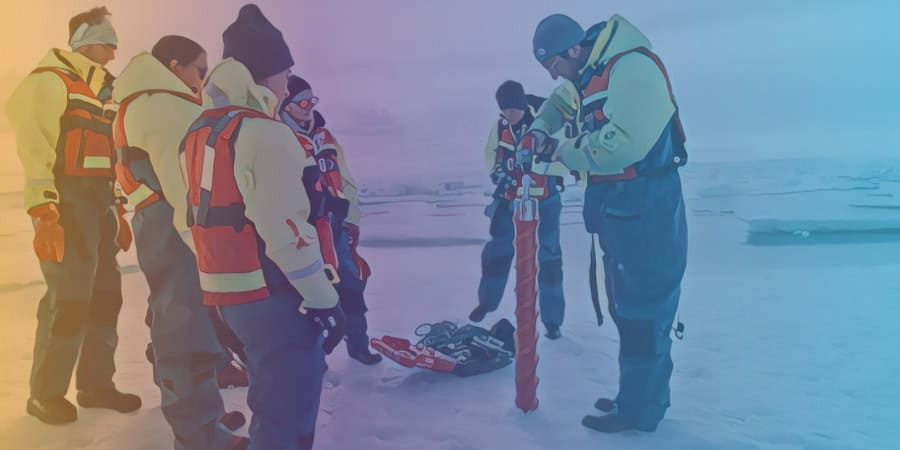Key Takeaways
- Melosira arctica, a type of algae that supports the Arctic food web, contains alarmingly high concentrations of microplastics, estimated at 31,000 particles per cubic meter.
- Microplastics in the algae could harm the entire Arctic ecosystem as organisms that consume the algae, or those that consume the algae's consumers, may also ingest plastic particles, potentially poisoning the food chain.
- Microplastics may also harm the algae itself, impairing its growth and photosynthesis and disrupting the ocean's carbon sequestration process.
- As the Arctic warms and human activity increases, plastic pollution is likely to worsen.
- More research is needed to fully understand the impact of microplastics on Arctic ecosystems, but scientists believe the effects will become more pronounced as microplastic concentrations continue to rise.
Beneath the Arctic Ocean’s pristine surface, a green, slimy world thrives. Melosira arctica, a type of algae, grows in large, dangling masses and curtains clinging to the underside of Arctic sea ice.
This algae, comprising long strings and clumps of diatoms, is an essential component of the polar ecosystem.
- arctica supports the entire food web, nourishing zooplankton, fish, birds, seals, and whales, and accounted for about 45% of Arctic primary production in 2012.
Microplastics Contaminate Algae
A new study published in the journal Environmental Science & Technology reveals alarmingly high concentrations of microplastics within M. arctica samples.
Researchers estimate that every cubic meter of M. arctica contains 31,000 microplastic particles, over ten times the concentration detected in the surrounding seawater.
The algae’s gummy nature may explain the high microplastic concentration.
Sea ice itself contains microplastics, which it traps through its freeze/melt cycle and collects from windborne pollution.
When sea ice melts in the spring, microplastics are likely captured by the algae’s sticky surface. As ice floes and their attached algal masses move around, they collect more plastic particles from ocean currents.
Beneath the Arctic Ocean’s pristine surface, a green, slimy world thrives. Melosira arctica, a type of algae, grows in large, dangling masses and curtains clinging to the underside of Arctic sea ice.

Consequences for the Arctic Ecosystem
Microplastics within M. arctica could have profound consequences for the Arctic ecosystem. As the algae form the basis of the food web, organisms that consume the algae, or those that consume the algae’s consumers, are likely ingesting plastic particles.
While the health impacts of microplastics are not well-established, early studies suggest they may be harmful to both humans and wildlife. The algae’s affinity for plastic may slowly poison the entire ecosystem.
Microplastics may also harm the algae itself. Laboratory experiments on other algal species have shown that microplastics can damage algal cells and impair photosynthesis.
The impact of microplastics on different algal species varies, but any additional stress on the rapidly changing Arctic systems due to climate change is unwelcome.
Implications for Carbon Sequestration
Microplastics in M. arctica could disrupt the ocean’s carbon sequestration process. As algae grow, they absorb carbon.
When they sink to the seafloor, they sequester the carbon in the depths. However, if microplastics inhibit algal growth or cause them to break apart more easily, the algae will absorb less carbon.
Consequently, scavengers in the water column may consume more algae, preventing some carbon from reaching the seafloor.
As the Arctic warms and human development increases, the situation may worsen. Greater human activity in the region, including fishing, tourism, and shipping, could lead to more plastic pollution.
More research is needed to understand the impact of microplastics on the organisms that ingest them and their movement through the food web.
As microplastic concentrations continue to rise, scientists believe the effects will become more pronounced, potentially crossing critical thresholds for certain species or areas.








